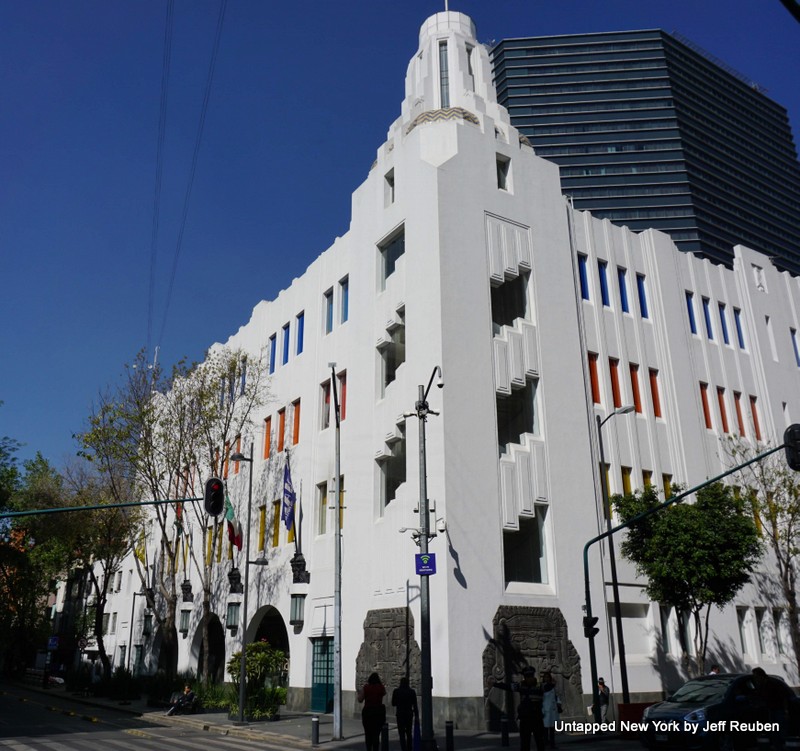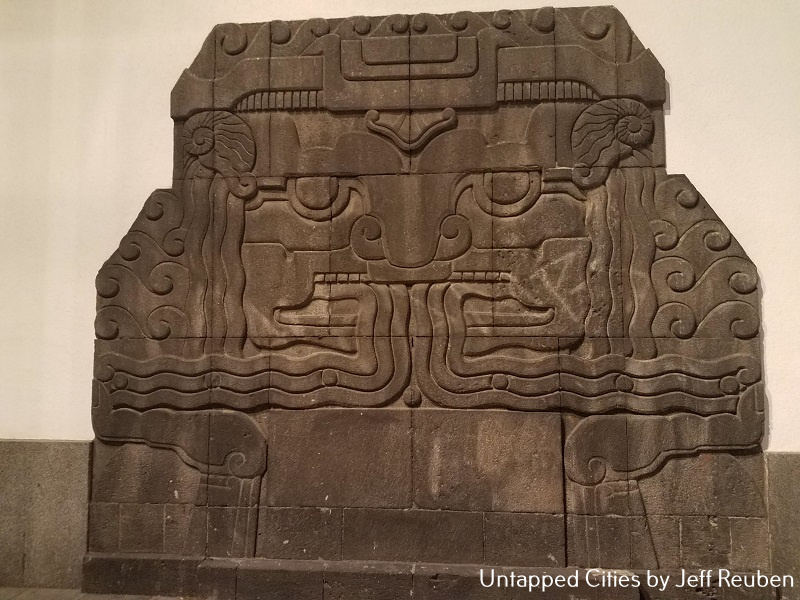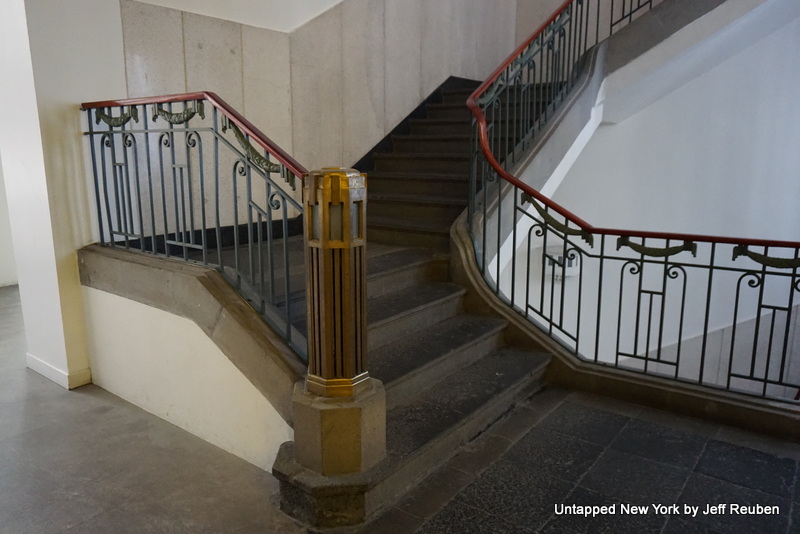3. Museo de Arte Popular

This building, completed as a police and fire station in 1928, integrates a range of Deco elements. The design by Vicente Mendiola and Guillermo Zárraga deftly uses a zig zag window pattern and geometric lines on the facades, corner tower, and interior courtyard to create a sense of movement and energy.
Near the corner there are two large lava rock reliefs with pre-Hispanic themes by sculptor Manuel Centurión. While “Mayan Revival” in American Art Deco was often kitschy or espapist, in the Mexican context such works fit into a cultural movement that celebrated the country’s indigenous origins. The reliefs on this building are inspired by depictions of Tlaloc, the Aztec rain god, found in a number of archaeological sites.

The building was damaged in the 1985 earthquake and left vacant for a number of years. It found new life when it was converted into the Museo de Arte Popular, which opened in 2006. Its Art Deco bones were preserved though re-imagined for its new use, allowing public access to this architectural treasure with artwork inside and out.

Not all Art Deco buildings in Mexico City have been so fortunate. Over the years many have been demolished and others, including an old movie palace, remain abandoned with uncertain fates.





